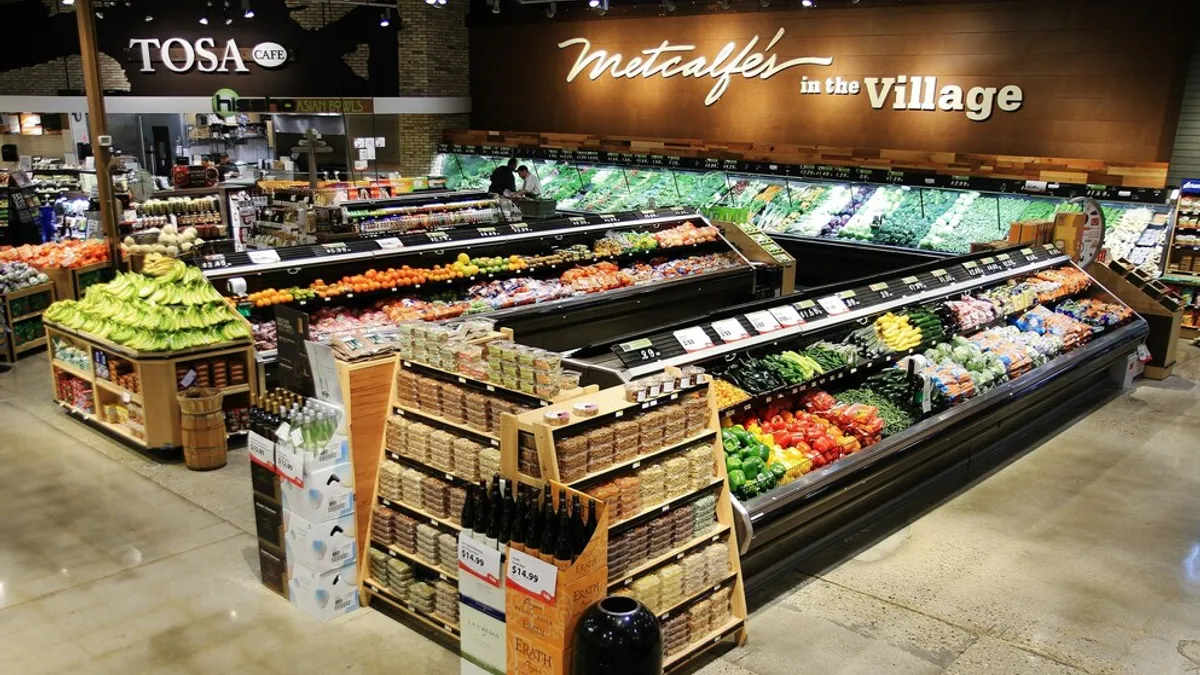Dive Brief:
- Prices at Whole Foods Market have hardly budged since last August when Amazon bought the chain and major changes were anticipated for the retailer’s “whole paycheck” image. A price check on 100 items conducted last month by Gordon Haskett Research Advisors found that prices at Whole Foods have dropped just 1.2% since that time, and only 0.1% since the researcher last checked prices at the chain in November, Bloomberg reported.
- When promotions are included, a basket of groceries costs 7% less at Sprouts Farmers Market than at Whole Foods, according to a Bloomberg Intelligence study. Gordon Haskett pointed out that organic produce prices at Whole Foods were more than double those at Sprouts.
- In both studies, prices varied by category, Gordon Haskett reported. For instance, while snack food prices dropped about 8% since November at Whole Foods, bread/bakery prices rose about 12% and produce prices gained about 6%.
Dive Insight:
There’s a certain impatience among industry watchers when one big retailer buys another. Big changes are expected in a hurry. But the smarter business move oftentimes is to move slowly, let the acquirer take stock of the acquisition, and then make strategic moves that are logical for the retailer and the markets in which it operates.
Although it hasn't brought down prices throughout Whole Foods stores, Amazon's promotional efforts — including selective price cuts and Prime integrations — appear to be having the desired effect. Sales have risen, and so has store traffic. Whole Foods needs operational discipline imposed, but its pricing model may just need tweaking, not upending.
When Amazon bought Whole Foods last August, it immediately cut prices on select items like organic avocados, unsalted butter and yogurt, made a promotional splash and saw increased traffic. The chain cut more prices on holiday staples in advance of the holidays last year, gave them ample promotion, but researchers found afterward that overall prices had actually gone up. While observers keep expecting broad-based price cuts, Amazon’s approach seems to be working, as sales in the physical stores topped estimates in the fourth quarter.
Whole Foods now offers two-hour Prime Now delivery from stores in six cities, with discounts for Prime members. Amazon is also offering a Prime Rewards Visa Card that will give Prime members 5% cash back on Whole Foods purchases. In the latest peek behind the curtain at what Amazon plans, signage was spotted at an Austin store offering Prime members special deals and additional 10% off of in-store sale items. The banner was taken down, and Whole Foods said there was no such program in test — but this indicates the kind of powerful promotions Amazon can bring into play.
Bloomberg columnist Sarah Halzack writes: “At least for now, Whole Foods is still the same old Whole Foods.” But how much should Amazon change Whole Foods? Is the "old Whole Foods" an entirely bad thing? "Whole paycheck" pricing doesn't look good to consumers, but it does mean high margins. If Amazon can maintain those higher margins, improve operational efficiency and project a value image through Prime promotions, Whole Foods becomes a very dangerous retailer.
And that's not even factoring in all the technology innovations the e-tailer will bring to the table.






